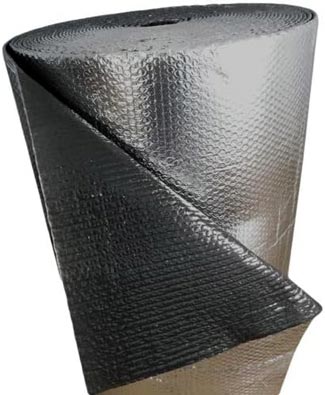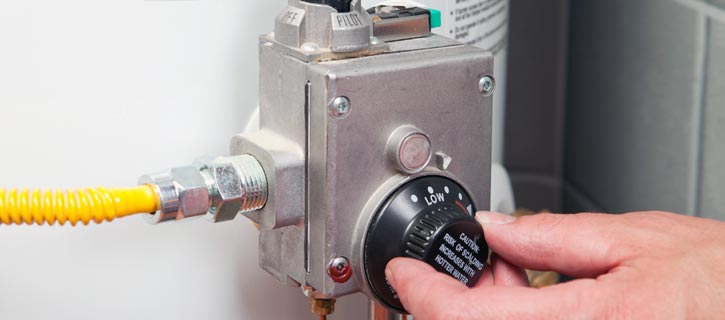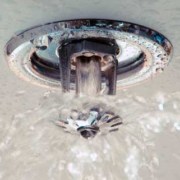5 Ways to Improve Water Heater Efficiency
For homeowners, managing energy efficiently is more important than ever, especially with the rising concerns about climate change and increasing utility costs. According to the U.S. Department of Energy (DOE), heating water alone can make up about 18 percent of the total energy usage at home. Furthermore, water heating is the second largest energy use in homes. This means that your water heater plays a significant role in your monthly utility bills.
Given these facts, it’s clear that optimizing a water heater’s efficiency is essential to lowering utility bills. To achieve this goal, we’ve provided a guide with some strategies to help optimize a conventional water heater’s performance. Below are 5 Ways to Improve Water Heater Efficiency.
1. Adjust the Thermostat’s Temperature for Efficiency
Your water heater’s thermostat setting significantly impacts energy consumption. While most manufacturers set the default temperature at 140 degrees Fahrenheit, adjusting it to 120 degrees can offer substantial energy savings.
“Most engineers and code officials recommend storing water at 120 degrees,” says Bill Ivey, Ivey Engineering’s principal consultant. “This temperature meets safety regulations and helps prevent scalding accidents.”
He recommends using a thermometer to verify the water temperature at a nearby sink for accuracy. “Water heater thermostats are not accurate and using them to set a temperature could be dangerous,” warns Ivey.
Consider lowering the temperature further, especially during warmer months or if your water heater is located near the shower. By reducing the temperature of the stored water, you minimize the energy required to heat the water, resulting in lower utility bills, and reduced environmental impact. (This doesn’t necessarily lower the temperature of the water being delivered since the shower valve can mix in less cold water to reach the desired temperature.)

2. Install a Water-Heater Thermal Insulation Blanket
A significant amount of heat loss occurs through the walls of your water heater tank, especially if it’s located in an unheated area such as a garage or basement. Installing a water-heater thermal insulation blanket is a cost-effective solution to reduce this heat loss and improve energy efficiency.
These blankets, made from fiberglass or foam insulation, create a barrier that traps heat inside the tank, minimizing standby heat loss. Per the DOE, by insulating your water heater, you reduce standby heat loss by 25 to 45 percent. This equates to saving about 7 to 16 percent in water heating costs. Most hardware stores, such as Home Depot or Lowes, sell thermal insulation blankets at affordable prices, typically ranging from $20 to $50.

Image credit: Amazon
3. Ensure Proper Insulation of Hot Water Pipes
In addition to insulating your water heater tank, don’t overlook the importance of insulating hot water pipes throughout your home. Uninsulated pipes can lose heat as hot water travels from the heater to your faucets and fixtures, resulting in energy waste and longer wait times for hot water. By installing foam pipe insulation, you can minimize heat loss and maintain water temperature more effectively.
This simple and inexpensive solution can raise water temperature by two to four degrees compared to uninsulated pipes, reducing the workload on the water heater, and improving overall efficiency. Foam pipe insulation is readily available at hardware stores, and you can easily install it with minimal tools and effort.
So far, we’ve covered the simpler and more economical ways to make your water heater run more efficiently. However, there are a few other (although more expensive) strategies to improve hot water heating efficiency even more.

4. Invest in a New Energy-Efficient Water Heater
“If your tank water heater is 15 years or older, it might be nearing the end of its useful life,” says Ivey. “In that case, it may be smart to invest in a new energy-efficient water heater.”
The DOE estimates that upgrading to a new water heater can save households between 10 and 50 percent on water heating costs annually.
A new conventional tank water heater, particularly one that’s an Energy-Star rated model, can offer significant long-term benefits. Since new water heaters are designed to comply with stricter energy efficiency standards, they use less energy for heating water. This translates to lower utility bills for the homeowner.
Another advantage of new water heaters is they often come equipped with programmable thermostats and digital controls for precise temperature management. Also, some new Energy-Star rated water heaters qualify for tax incentives or rebates from utility companies or government agencies, further offsetting the cost.
Another option for a new efficient water heater is to switch to a tankless model. Tankless, or on demand, models have increased in popularity over the last several years. However, before making a decision, do some research and weigh out the pros and cons of tankless water heaters.

5. Consider Alternative Water Heating Systems
“For homeowners seeking even greater energy efficiency and environmental sustainability, alternative water heating systems such as solar water heaters or heat pump systems are worth exploring,” explains Ivey.
Solar water heaters utilize sunlight to heat water, offering a renewable and environmentally friendly alternative to conventional water heating methods.
Similarly, heat pump water heaters (HPWH) draw out heat from the surrounding air and transfer it to the water, consuming less energy than conventional electric water heaters. While these systems may have a higher upfront expense, they offer lower operating costs and significant long-term savings on utility bills.
Besides the money saved on your utility bills, other advantages to an alternative system are possible federal tax credits and rebates. The Inflation Reduction Act includes a 30 percent tax credit (through 2032) of the cost of the purchase and installation of a HPWH or solar heating system, up to $2,000 total. For example, if your total installation costs come to $3,500, you’ll get a $1,050 tax credit. If you’re wondering which alternative water heater models qualify for an instant rebate, use the Energy Star rebate finder.
Thinking about making the switch to solar power? Read about the reasons why homeowners should go solar.

Every homeowner’s situation is different when it comes to water heater efficiency. Are you the type of homeowner who wants to reduce your carbon footprint while dramatically reducing energy use? Then an alternative water heating system could fit your energy saving needs.
For those looking for a more simple and economical approach, installing a thermal blanket or insulating hot water pipes might make more sense to you. Regardless, you can begin today to improve your water heater’s efficiency by implementing one or several of the five strategies listed above. You’ll then be able to start enjoying the long-term benefits of reduced energy consumption and lower utility bills.
If you still have questions about hot water heating and efficiency or need a plumbing expert witness, give Ivey Engineering a call today.











